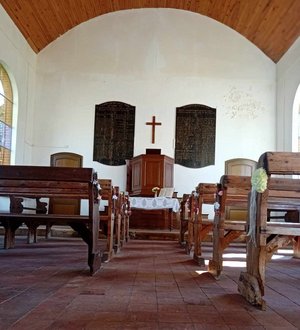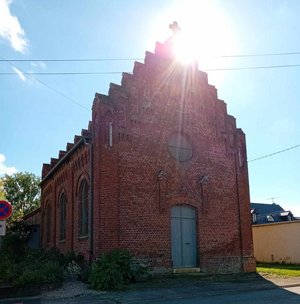Each commune has one or more places of worship. Below is a selection of our residents' favorites and atypical buildings.
The Gothic church of Saint-Pierre has been listed as a historic monument since 1901. Built in the 16th century, it was destroyed during the Spanish invasion of 1636.
It was damaged again in 1916, during the battles of the Somme, and restored between the wars.
Its facade is one of Picardy's most beautiful picture facades, with many incredible sculptures. The three mallets are found on the church portal, above each door.

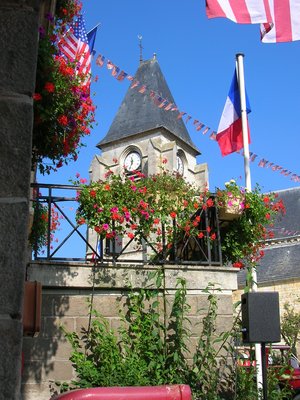
The majestic St-Nicolas church was built in the 12th century on the ruins of an ancient monastery, once built by the monks of Saint-Riquier. The choir is in the Gothic style. The square bell tower dates from the first half of the 18th century.
The church is built of local stone (soft yellow limestone), and has been listed as a historic monument since 2nd April, 1908.
Curiosity: All that remains of the original furnishings, which escaped the vandalism of 1793, are the confessional and the pulpit, behind the pillar of which is a bas-relief depicting a salamander, the emblem of François I.
Built in the 16th century, the Gothic-style church of Saint-Nicolas has had its bell tower listed as a historic monument since 1919.
Curiosity: a carved wooden sculpture of the bishop Saint-Nicolas made at the end of the 17th century.
Do you know the legend of St. Nicholas?
It tells how St. Nicholas, bishop of Myre, resurrected three innocent victims of a greedy butcher and became the patron saint of children. Three children were out gleaning in the fields and got lost on their way home. Seeing light in the windows of a house, they asked the owner for help, and he promised them hospitality for the night. The man was a butcher, and as soon as the children entered the house, he killed and butchered them, then put them in his salting trough to make salted pork.
One day, Saint Nicholas passed by. Invited to come in and dine by the butcher, he understood what had happened. Placing three fingers above the salting trough, he brought the three children back to life. Then, to punish the butcher, he chained him to his donkey. He then became Father Fouettard, a violent, evil being hated by children.
Even today, it's customary for children to receive sweets and cards from their beloved Father Nicholas.
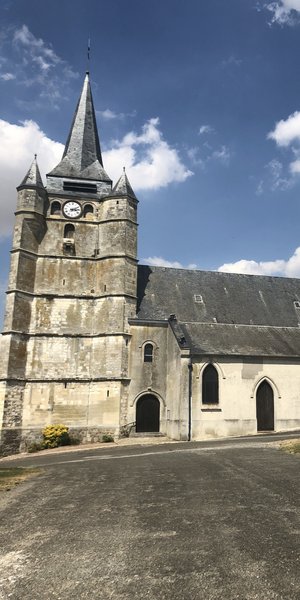
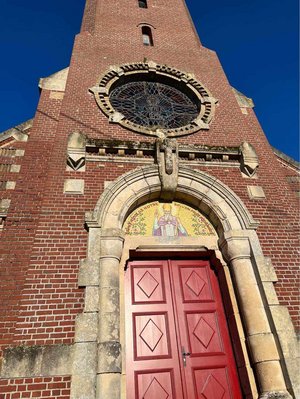
In this village near the front line, Saint-Nicolas church, though unobtrusive at first glance, was completely destroyed in 1916. Rebuilt in 1929, its red brick walls bear the 2 symbolic dates.
Curiosities: the paintings by the famous painter Jonas in 1939. Incredible but true, this painter had the village's inhabitants portray famous Catholic figures in his works, much to the amusement of Mesnilois at the time.
The mosaic of St-Nicolas, on the outside pediment of the church, is a true masterpiece. Inside, a statue of Saint Nicolas is listed as a historic monument, and a stained-glass window depicting a wounded soldier illustrates the atrocities of the Battle of the Somme.
The Saint-Fursy church in Authuille replaces the village's former church, destroyed during the First World War. Built in 1933 by architect Robert Rigaut, it is typically Art Déco in style. An intimate church, its exterior is a play of red and yellow bricks arranged in a checkerboard pattern, and its blue stained-glass windows immerse you in a warm atmosphere.
Curiosities: a reconstructed stone statue of St Fursy by Gérard Ansart, a 7th-century Irish monk. And, quite unusually, the church's roof is made of lead.
Did you know? In Authuille, formerly called Antiolum, on the little river Ancre, St Fursy, whose name means “virtue”, drove the demon out of the body of a wretch who had tormented him and his whole family, before converting them.
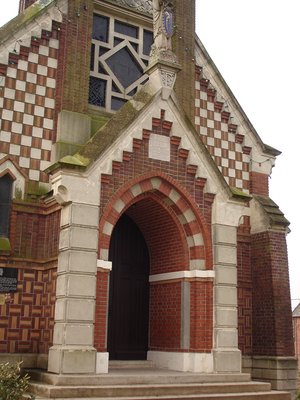
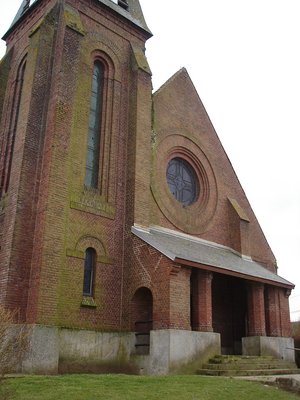
A church like no other. Born of reconstruction, it stands out for its Art Déco look! If you like mosaics, you won't be disappointed!
Curiosity: Maurice Dhomme created a spectacular Glory Beam - with a Byzantine Christ, in ceramic on a concrete core, topped by a triumphal arch of the same nature - depicting Christ with his mother (dressed in black) at the foot of his cross, surrounded by angels bearing a garland of roses.
Maurice Dhomme, renowned ceramist and decorator, once again demonstrated his talent during the reconstruction of this church in Bazentin.
Curiosity: Crucifixion, baptismal font, stoup, antependium, colorful ceramic plaques created by Maurice Dhomme to pay tribute to the dead.
If you're visiting Bazentin, don't miss the bust of the famous naturalist Jean-Baptiste Lamarck, as well as Norton Sax's 4.60-metre-high sculpture of a giraffe, made from salvaged motorcycle and car parts in honour of Lamarck's chevalier, Jean-Baptiste de Monet, to illustrate his theory of evolution.
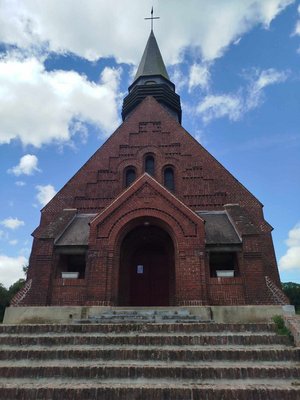
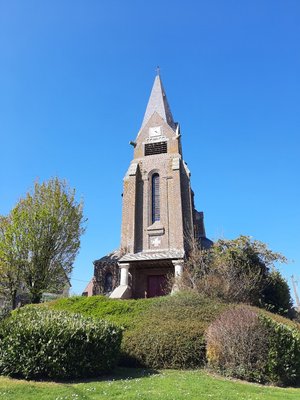
Destroyed during the First World War, like most of the region, the Irles church is an integral part of the Reconstruction Heritage.
It was built between 1928 and 1935. The chancel is set back 45° to the right, downstream from the village, from the site of the old church. Constructed in brick, with a few concrete elements, notably the entablature above the side door, it is best known for its wrought iron and mosaics.
Until the 17th century, it is difficult to know the exact history of the village. A few obscure noble names appear when land is purchased on the seigneury (de Houblières, de Rigauville).
It was at this time that the de Raincheval family purchased the seigneury, in 1683. From then on, Harponville was influenced by the Protestant religion, as Marc François de Raincheval's mother-in-law was Protestant.
In the 18th century, Protestants were buried in their gardens. With the Edict of Toleration, many Protestants from Harponville, who had married in Tournai, made their union official on the French register.
By the early 19th century, understanding between the two religions was such that the two denominations agreed to build a wall in the church, so as to have a Catholic church on one side and a Protestant temple on the other. It took the intervention of the prefect and the bishop in 1804 to have the wall demolished. The first Protestant temple in the Somme department was built in Harponville in 1823. It was a rather basic wattle-and-daub building. This temple burned down in 1859, along with around twenty houses, and a second temple (the current one) was built in 1863.
Owned by the municipality since 1990, it is still used for processions, baptisms and communions. The temple also houses temporary exhibitions.
